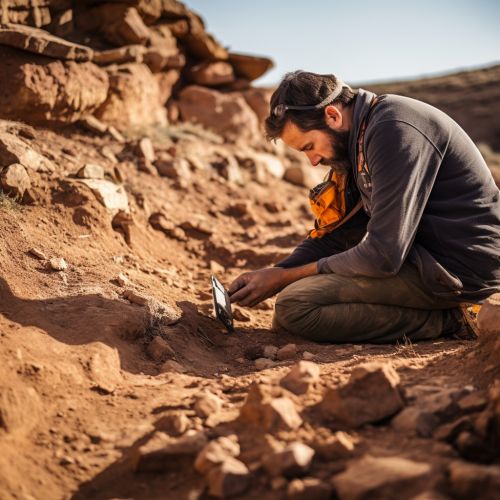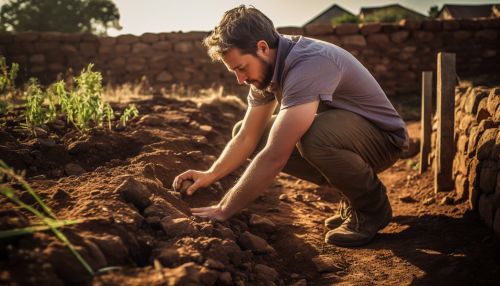Geoarchaeology and Human History
Introduction
Geoarchaeology is an interdisciplinary field that applies the concepts and methods of geology to the study of archaeological sites, landscapes, and artifacts. It is a branch of archaeology that uses the principles of earth science to examine human history and the environmental context of archaeological sites. Geoarchaeologists study the physical processes that affect archaeological sites such as soil formation, sedimentation, and erosion.


The Role of Geoarchaeology in Human History
Geoarchaeology plays a crucial role in understanding human history. It provides a context for archaeological sites, allowing researchers to reconstruct the landscapes and environments in which ancient people lived. This can help to shed light on the ways in which humans have interacted with their environment over time, and how these interactions have shaped human societies and cultures.
For example, geoarchaeological studies can reveal changes in the landscape that may have influenced human settlement patterns, such as shifts in river courses, changes in sea levels, or the formation of new landforms. By studying the geological context of archaeological sites, geoarchaeologists can also gain insights into the resources that were available to ancient people, and how they exploited these resources.
Methods and Techniques in Geoarchaeology
Geoarchaeologists use a range of methods and techniques to study the geological context of archaeological sites. These include field mapping, stratigraphic analysis, soil and sediment analysis, and the use of remote sensing technologies such as GIS and satellite imagery.
Field mapping involves the detailed surveying and recording of the physical features of an archaeological site and its surrounding landscape. This can help to identify the geological processes that have affected the site, and to reconstruct the past environments in which ancient people lived.
Stratigraphic analysis involves the study of the layers of soil and sediment that have accumulated at an archaeological site over time. By examining the characteristics of these layers, such as their composition, texture, and color, geoarchaeologists can gain insights into the environmental conditions that prevailed when the layers were deposited.
Soil and sediment analysis involves the laboratory examination of soil and sediment samples from an archaeological site. This can provide information on the types of materials that were present at the site, such as plant and animal remains, and can also reveal evidence of human activities, such as the use of fire or the cultivation of crops.
Remote sensing technologies, such as GIS and satellite imagery, can be used to study the wider landscape context of archaeological sites. These technologies can reveal features that are not visible on the ground, such as ancient field systems, irrigation channels, or roads.
Case Studies in Geoarchaeology
There are many examples of how geoarchaeology has contributed to our understanding of human history. Here are a few notable case studies:
1. The Nile Valley in Egypt: Geoarchaeological studies have revealed that the Nile River has changed its course many times over the past several thousand years. These changes have had a major impact on human settlement patterns in the region, with many ancient cities and towns being located along the river's former channels.
2. The Indus Valley Civilization in South Asia: Geoarchaeologists have used satellite imagery to identify the ancient course of the Indus River, and to locate archaeological sites associated with this civilization. This has helped to shed light on the extent and organization of the Indus Valley Civilization, which was one of the world's earliest urban societies.
3. The Maya Civilization in Central America: Geoarchaeological studies have shown that the Maya people modified their environment in significant ways, through activities such as the construction of terraces for agriculture, and the creation of reservoirs for water storage. These studies have also revealed evidence of environmental changes, such as periods of drought, that may have contributed to the collapse of the Maya civilization.
Conclusion
Geoarchaeology is a vital tool in the study of human history. By examining the geological context of archaeological sites, geoarchaeologists can gain insights into the ways in which ancient people interacted with their environment, and how these interactions have shaped human societies and cultures. Through its interdisciplinary approach, geoarchaeology provides a deeper understanding of the past, and helps to inform our understanding of contemporary environmental issues.
